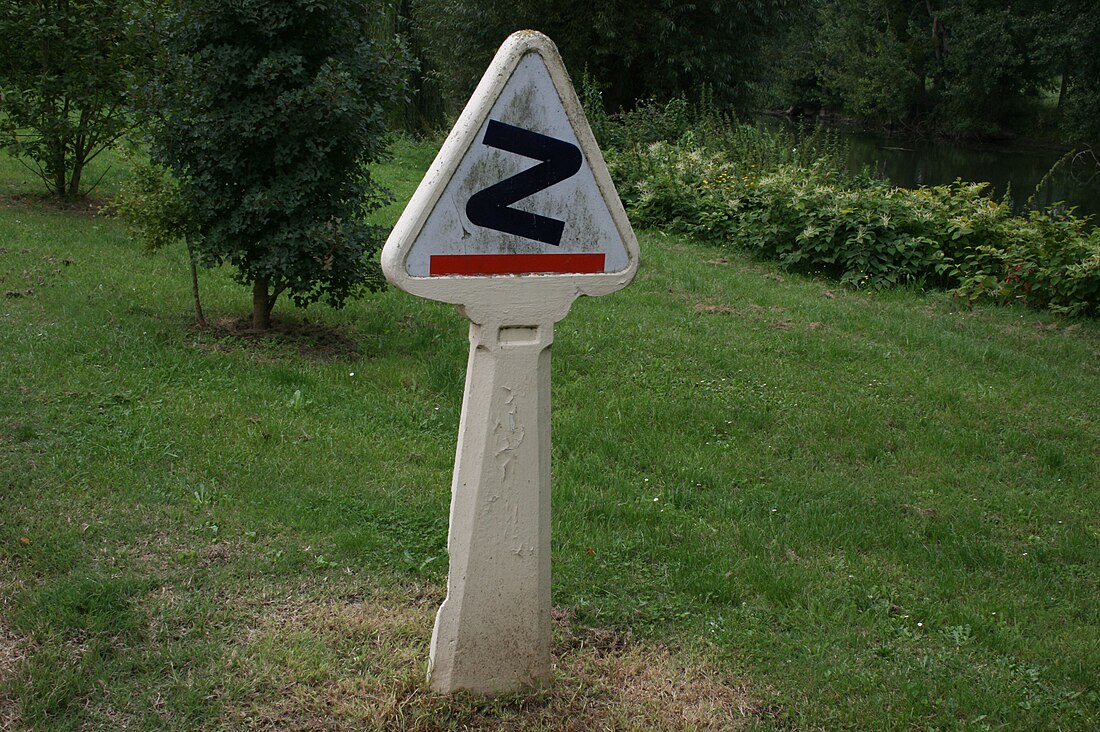Top Qs
Timeline
Chat
Perspective
Bourbaki dangerous bend symbol
Typological symbol representing difficulty From Wikipedia, the free encyclopedia
Remove ads
The dangerous bend or caution symbol ☡ (U+2621 ☡ CAUTION SIGN) was created by the Nicolas Bourbaki group of mathematicians and appears in the margins of mathematics books written by the group. It resembles a road sign that indicates a "dangerous bend" in the road ahead, and is used to mark passages tricky on a first reading or with an especially difficult argument.[1]
Certains passages sont destinés à prémunir le lecteur contre des erreurs graves, où il risquerait de tomber; ces passages sont signalés en marge par le signe ☡ (« tournant dangereux »)
Some passages are designed to forewarn the reader against serious errors, where he risks falling; these passages are indicated in the margin with the sign ☡ ("dangerous bend")
Nicolas Bourbaki's description of the symbol in several textbooks[2]

Remove ads
Variations
Others have used variations of the symbol in their books. The computer scientist Donald Knuth introduced an American-style road sign depiction in his Metafont and TeX systems, with a pair of adjacent signs indicating doubly dangerous passages.[3][4][5][6]
Typography

In the LaTeX typesetting system, Knuth's dangerous bend symbol can be produced by
first loading the font manfnt (a font with extra symbols used in Knuth's TeX manual) with
\usepackage{manfnt} and then typing \dbend
There are several variations given by \lhdbend, \reversedvideodbend, \textdbend, \textlhdbend, and \textreversedvideodbend.
Remove ads
See also
References
External links
Wikiwand - on
Seamless Wikipedia browsing. On steroids.
Remove ads
